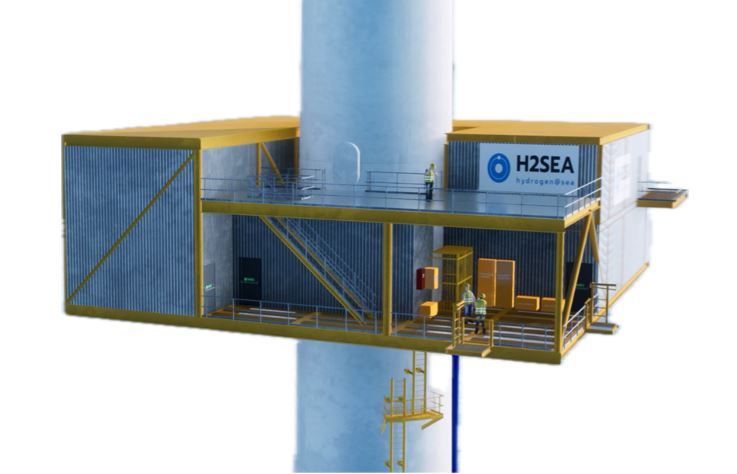In a collaboration between H2SEA and Delft University of Technology, a comprehensive structural assessment was conducted to explore the viability of integrating decentralized hydrogen production on monopile-based support structures for offshore wind turbines (WTGs).
The central question addressed in this assessment was whether decentralized hydrogen production on the support structure of an offshore wind turbine, specifically based on monopiles, is structurally feasible. The research sought to identify key differences in support structure geometry and evaluate the necessary changes in the design methodology for offshore wind turbine support structures when combined with a decentralized hydrogen production platform.
To simulate real-world conditions and anticipate future developments, a 15 MW reference turbine was selected for deployment in the F3 sector of the North Sea, with a water depth of 45 meters. The study encompassed the determination of platform mass, dimensions, rotational inertia, and an optimized platform layout. Various system components were selected, listed, and integrated into the platform design, considering gravitational loads and extreme wind gust loads.
The selection of the support structure concept involved a meticulous multi-criteria analysis, weighing factors critical to both offshore wind turbines and hydrogen production platforms. For fatigue assessment, an analytical fully dynamical model was constructed using Maple. This model simulated the dynamic behavior of both structures, incorporating factors such as airy wave force, rotor damping, topside and platform mass, rotational inertia, embedded length, and soil stiffness.
The dynamical model allowed for the determination of first and second natural frequencies, presenting displacements and overturning moments in these two mode shapes. To ensure robustness and reliability, a fatigue damage calculation was conducted, considering 500 combinations of wave height and period over a 25-year lifetime.
This structural assessment not only pushes the boundaries of offshore wind turbine technology but also introduces the concept of integrating decentralized hydrogen production. The successful implementation of such a system would revolutionize the renewable energy landscape, offering a sustainable and innovative approach to power generation.
